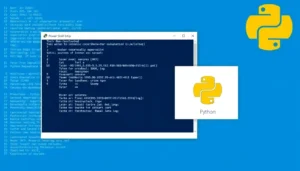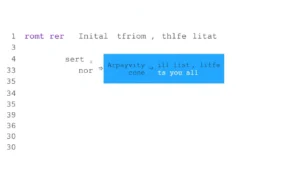Broadcom AI Chips Threaten Nvidia: A New Chapter in AI Hardware
- THE MAG POST

- Sep 7
- 5 min read

Broadcom AI chips are reshaping the competitive map of AI hardware, signaling that the battlefield extends beyond Nvidia's GPUs toward tailor-made accelerators and integrated software. As the company pursues a multi-pronged strategy—advanced silicon design, aggressive process-node bets, and a growing roster of hyperscale customers—the implications ripple through margins, supply chains, and how buyers evaluate total cost of ownership. Investors will want to watch the cadence of design wins, manufacturing yields, and partner ecosystems as the AI arms race accelerates while Broadcom accelerates its own roadmap.
Broadcom AI chips: A New Challenger Enters the Arena
Broadcom AI chips are reshaping the competitive map of AI hardware, signaling that the battlefield extends beyond Nvidia's GPUs toward tailor-made accelerators and integrated software. As the company pursues a multi-pronged strategy—advanced silicon design, aggressive process-node bets, and a growing roster of hyperscale customers—the implications ripple through margins, supply chains, and how buyers evaluate total cost of ownership. Investors will want to watch the cadence of design wins, manufacturing yields, and partner ecosystems as the AI arms race accelerates while Broadcom accelerates its own roadmap.
Market Positioning and Competitive Dynamics
Broadcom’s move centers on ASIC accelerators designed to handle specific AI workloads more efficiently than general-purpose GPUs. If the trajectory holds, analysts project the AI compute and networking share to roughly double by the late 2020s, approaching a quarter of the market. Such an outcome would compress Nvidia’s lead and compel the broader ecosystem to reassess benchmarking standards, pricing, and service models. In this evolving landscape, Broadcom’s strategy emphasizes not just hardware but an integrated stack—delivering predictable performance alongside tighter supply-chain coordination for enterprise clients.
Beyond architecture, the emphasis on integrated software, tooling, and customer enablement helps Broadcom to attract a broader set of buyers seeking differentiated value. The result could be a more balanced marketplace where buyers gain options and resilience, rather than a single, dominant supplier dictating terms. If execution aligns with projections, the industry could see faster adoption cycles and more varied deployment scenarios across data centers and cloud environments.
Customer Wins and Revenue Impacts
Early signals imply incremental revenue momentum for Broadcom’s AI chips, with orders from new customers and expanding commitments from existing users. While precise figures remain fluid, the market is pricing in meaningful contributions to quarterly performance, aided by a broader product lineup and favorable cost structures. A diversified revenue mix in AI accelerators would also help cushion cyclicality in traditional semiconductor segments, potentially supporting steadier earnings trajectories.
In conversations with major cloud providers and AI developers, OpenAI is frequently cited as a marquee partner, with potential demand implying substantial yearly uplift in AI compute-related sales. Should these relationships mature, the company could realize margin benefits if manufacturing yields improve and the cost of design and tooling scales efficiently, even as competition intensifies in the AI compute arena.
Manufacturing Edge and Node Advances
Broadcom’s manufacturing push underscores a strategic shift toward efficiency, density, and energy-aware AI compute. The prospect of a next-generation 2-nanometer node signals a potential industry-first capability that could outperform prior generations in speed and power metrics. While Nvidia continues to leverage its GPU-scale software ecosystem, Broadcom’s custom ASIC approach seeks to unlock specialized workloads with competitive economics, particularly for data centers seeking differentiated performance at scale.
Technology Leap and Time-to-Market
The 2nm program embodies more than a marketing milestone; it represents a disciplined attempt to own critical segments of the AI stack—from silicon to software. If ramp timing aligns with internal projections, Broadcom could secure a broader set of hyperscale customers earlier than many rivals anticipate, delivering faster payback on R&D and capital expenditure. The industry will assess yield curves, supplier commitments, and a harmonized ecosystem of design tools as crucial determinants of commercial speed.
Industry chatter suggests that the node could deliver gains in density and efficiency, translating into a lower total cost of ownership for large-scale AI deployments. Practically, buyers may encounter a stronger value proposition when considering hardware, software licenses, and ongoing maintenance over multi-year AI initiatives.
Risks and Execution Challenges
Nevertheless, execution challenges abound. The AI accelerator market remains fiercely competitive, with Nvidia’s established ecosystem raising the bar for performance, software maturity, and developer support. Broadcom must demonstrate reliable throughput and favorable yields at scale, while maintaining accessible pricing for customers and partners. Any ramp delays or misalignment with toolchains could temper the upside and shift investor sentiment rapidly.
Supply chain resilience, qualification cycles, and seamless integration into diverse data-center environments will shape outcomes. The company will need to sustain pricing discipline, nurture cloud partnerships, and navigate regulatory or geopolitical headwinds that can influence capital spending and procurement cycles across regions.
Investors and the AI Chip Ecosystem
Wall Street indicators point to a nuanced signal: Nvidia remains the icon of AI GPUs, but Broadcom’s progress broadens the market and could expand the AI compute pie. The stock reaction has been constructive, with notable moves that added substantial market value and prompted peers to recalibrate risk assessments and opportunity sets in AI. Analysts see potential for sustained momentum into 2026 if customer absorption, cost discipline, and iterative product advances stay on track.
For Nvidia and the broader ecosystem, the test is whether Broadcom’s innovations alter pricing power, redefine performance benchmarks, or simply widen the base of AI adopters. If Broadcom executes as outlined, the landscape could become more collaborative competitive—customers gain better options, while the industry accelerates real-world AI deployments and the pace of innovation across the stack.
Stock Reaction and Market Valuation
Investors are parsing the implications for equity valuations and capital allocation. A credible push into AI accelerators with scalable margins can support multiple expansion scenarios, especially if the new node achieves favorable yields and broad adoption across cloud platforms. Yet the spectrum of outcomes remains wide, hinging on execution, ecosystem coordination, and the durability of AI demand as deployments scale globally.
Strategically, Broadcom’s trajectory could alter how market participants benchmark AI hardware risk, with a persistent emphasis on total cost of ownership, performance per watt, and the speed of deployment—factors that ultimately shape long-term profitability and competitive dynamics in the AI era.
Key Takeaways
Strategic Signals for AI Hardware
The emergence of Broadcom AI chips as a credible challenger injects new momentum into the AI hardware narrative, prompting Nvidia to respond with tighter integration of software ecosystems and accelerated roadmap cadence. The manufacturing push, highlighted by the 2nm node ambition, hints at meaningful efficiency gains that could tilt decision-making for hyperscale buyers and influence capex planning across the data-center landscape.
As the ecosystem matures, buyers will increasingly weigh total cost of ownership, device-level performance, and the reliability of long-term commitments. The market should monitor design wins, partner alignments, and yield trajectories to gauge whether Broadcom transforms from a compelling alternative into a durable pillar of the AI compute infrastructure.
Aspect | Takeaway |
Competitive arena | Broadcom chips present a credible challenge to Nvidia's GPU dominance in AI workloads. |
Market reaction | Shares rallied, boosting market capitalization by a broad amount in the hundreds of billions. |
Technology edge | 2nm node and custom ASICs offer potential gains in efficiency and density. |
Risks | Execution risk, supply chain dynamics, and software/ecosystem alignment remain critical. |






















































Comments